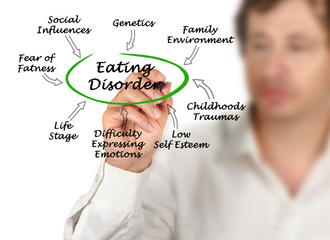Written By: Tiffany Smith, M.Ed, LMHC (she/her)
Professional Relations Representative, The Renfrew Center of Florida

8 Factors to Consider When Choosing a Residential Facility
Eating disorders are complex mental health conditions that require comprehensive treatment. For some, residential treatment may be the best option to provide the intensive care, structure and support needed for recovery. If you’re considering residential treatment facilities, here are the most important data points to compare.
1. Specialization in Eating Disorders
The treatment team should include professionals with expertise in eating disorder treatment, such as therapists, dietitians, psychiatrists, and medical staff. Receiving treatment at a facility that specializes in eating disorders can increase the likelihood of successful recovery and long-term health.
2. Comprehensive Assessment & Individualized Treatment Plans
A reputable treatment facility will conduct a thorough assessment to understand the unique needs of each client. A comprehensive eating disorder treatment assessment can also reveal if the treatment program and the client are a good fit for each other.
3. Evidence-Based Treatment Approaches
Look for a facility that uses evidence-based practices, establishes markers of client progress, and has published peer-reviewed treatment outcomes to back up these practices.
4. Nutritional Counseling & Meal Support
Structured meal support should be available to help clients develop a healthy relationship with food and provide support and skills in the moment to help cope with difficult emotions.
5. Medical Monitoring & Support
Eating disorders can have serious medical complications. The facility should have medical staff available to monitor clients’ physical health and provide necessary education and medical interventions, if needed.
6. Continuum of Care & Aftercare Planning
Choose a facility that offers a continuum of care, including step-down programs and aftercare planning. Ideally, patients gradually move through the lower levels of care after completing a residential program.
7. Family Involvement
Be sure to look for a program that involves family members (this can be the client’s chosen family or the client’s support system) in the treatment process by providing psychoeducation to family members, offering family therapy sessions, and/or providing support groups for your friends and family.
8. Holistic Approach
Consider choosing a residential program that offers a holistic approach to treatment, addressing not just the symptoms of the eating disorder, but also the underlying emotional and psychological aspects. Eating disorders are not just about food and the body; they are often strategies an individual has learned to cope with difficult emotions or situations.
Conclusion
Recovery can be difficult, but it is much less difficult when you have the structure and the support you need and deserve. Eating disorders thrive in isolation and are maintained by shame, secrecy, and fear. The right residential treatment program can target these issues and create an environment where an eating disorder cannot easily thrive or survive. Choosing an eating disorder treatment facility is an important decision that calls for careful consideration. Hopefully by focusing on these 8 key factors, you can ensure that you find a facility that meets your unique psychological and medical needs and offers you a supportive and healing environment to recover.



